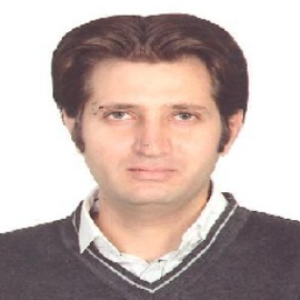Title : Adsorption of perfluorinated surfactants on activated carbon: Role of the adsorbents surface chemistry Navid Saeidi
Abstract:
Perfluorinated alkyl surfactants (PFAS) are a class of anthropogenic organofluorine compounds in which each hydrogen atom on the alkyl chain is replaced by a fluorine atom. All PFAS contain a hydrophilic head group and a hydrophobic perfluorinated tail. So they have unique distinct amphiphilic properties compared to conventional hydrocarbon-based surfactants, enabling their use in various application areas. In addition, the mentioned properties make them persistent, bioaccumulative and almost ubiquitously distributed in aquatic environments. Their widespread occurrence in the environment may produce long-term and extensive harm to human and wildlife, which has been confirmed in recent years. Therefore, efficient removal of PFAS from water is of vital importance. Adsorption particularly by utilization of activated carbon (AC) is recognized as a promising technique for this purpose. However, it has been reported that variation in adsorption performance of various AC products is much more pronounced for PFAS than known for conventional non-polar contaminants. An appropriate selection of activated carbon for an efficient removal of PFAS has not been discussed in detail yet.
In this presentation, the key chemical characteristics of AC which are crucial for optimal adsorption of PFAS will be discussed. Actually, several activated carbon felts (ACFs) were characterized with various techniques including nitrogen adsorption-desorption analysis for determination of porosity, light microscopy to measure the fiber’s diameter, determination of point of zero net proton charge (PZC) and total acidity by Boehm titration method, temperature-programmed desorption (TPD) for quantification of O-containing functional groups, as well as anion and cation exchange capacity of the ACFs by the respective standard methods. Among these ACFs, four of them having different surface chemistries but the same porosity and fiber’s diameter were selected and applied for next experiments. A series of adsorption experiments were performed to study the role of surface chemistry of AC on equilibria and kinetics of PFAS adsorption and to describe them by appropriate models. In addition, adsorption of PFAS on the ACFs in presence of natural organic matter (NOM) and different concentrations of metal cations (monovalent and divalent) were investigated. The results proved that there was a significant difference between adsorption affinities of PFAS on these four ACFs even in presence of NOM and different concentrations of metal cations. The most influencing chemical characteristics of the ACFs in adsorption of PFAS were identified. After that, it was tried to take advantage of the results obtained here to chemically modify the ACF with lowest affinity in adsorption of PFAS. The modified ACF sample showed a strongly enhanced adsorption whereby Freundlich isotherm coefficients of the two PFAS under study (perfluorooctanoic acid and perfluorobutanoic acid) increased by almost 3 and 2 orders of magnitude, respectively, compared to the original ACF.



